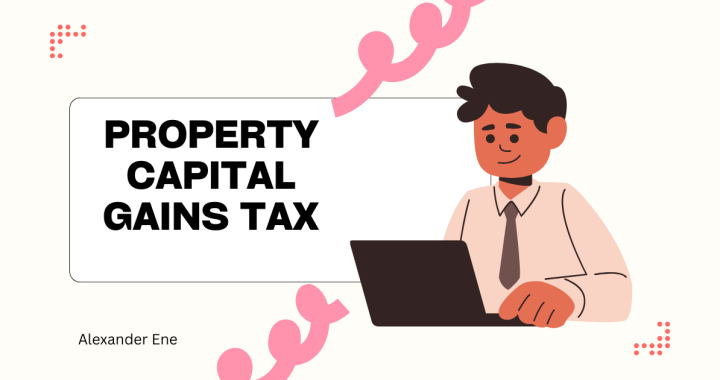
Have you ever wondered if you can reduce the amount of tax you pay as a couple? If either you or your spouse has a lower income, you can transfer Marriage Allowance and save money in tax. Understanding the ins and outs of Marriage Allowance transfer can seem like a difficult task. But don’t worry—this guide is here to help simplify everything you need to know.
What is Marriage Allowance?
Marriage Allowance is a tax benefit that allows you to transfer part of your Personal Allowance to your husband, wife, or civil partner. This transfer can reduce their tax bill by up to £252 in a given tax year, which runs from 6 April to 5 April the following year. Essentially, it can save you money by allowing your partner to benefit from unused allowances.
How Marriage Allowance Works
To take advantage of Marriage Allowance transfer, you, as the lower earner, must have an income below your Personal Allowance, which is usually £12,570. By transferring £1,260 of your Personal Allowance to your partner, you’re enabling them to receive a tax credit that reduces their taxable income.
Here’s an example to illustrate the benefit:
- Your Income: £10,250 (below the Personal Allowance of £12,570 means you pay no tax)
- Your Partner’s Income: £20,000 (above the Personal Allowance, so taxable income is £7,430)
- After Claiming Marriage Allowance:
- Your Personal Allowance: £10,250 (you now pay no tax)
- Your Partner’s Personal Allowance: £13,830 (only pays tax on £6,170)
As a result, you go from paying Income Tax on a combined £7,430 to paying tax on a combined £6,170. This means a tax saving of £252.
Eligibility Criteria
You can benefit from the Marriage Allowance if all of the following conditions are met:
- You are married or in a civil partnership.
- Your income is below the Personal Allowance, or you do not pay Income Tax.
- Your partner pays Income Tax at the basic rate, which usually means their income is between £12,571 and £50,270 before receiving the Marriage Allowance.
However, you cannot transfer Marriage Allowance if you and your partner are living together but are not married or in a civil partnership. Additionally, if either you or your partner were born before 6 April 1935, you might benefit more from the Married Couple’s Allowance.
How to Apply for Marriage Allowance
Applying for Marriage Allowance is straightforward and can be done online via the GOV.UK website. Here’s a step-by-step guide to help you through the process:
- Visit the GOV.UK Website: Go to the Marriage Allowance section on the GOV.UK website.
- Check Your Eligibility: Ensure you meet all the necessary criteria for claiming Marriage Allowance.
- Complete the Application:
- You will need to provide details such as your National Insurance number, your partner’s National Insurance number, and proof of your identities, such as your P60 or other employment details.
- Fill in the required information and submit the application.
- Confirmation: After you apply, you should receive a confirmation email that your application is being processed. You might be contacted if further information is needed.
Backdating Your Claim
If eligible, you can backdate your claim to include any tax year within the last 4 years. This can be particularly useful if there were previous years where you qualified but did not claim Marriage Allowance. The process for backdating is the same as submitting a new claim; you will just need to select the appropriate years during the application.
Cancelling Marriage Allowance
You can cancel Marriage Allowance if your circumstances change, such as a change in your income, or if your relationship ends. The Personal Allowance will transfer automatically each year until you cancel it.
Special Considerations
Dividends, Savings, and Benefits
If you receive other types of income, such as dividends, savings, or benefits from your job, you should calculate how much tax you could save as a couple. You can do this using the online calculator available on the GOV.UK website. Additionally, you may want to contact the Income Tax helpline if you’re uncertain about your taxable income or to get personalized advice.
Living Abroad and Pensions
Living abroad or receiving a pension does not affect your application for Marriage Allowance as long as you receive a Personal Allowance. Regardless of where you live, you can still apply and benefit from this allowance.
Dealing with Deceased Partners
If your partner has unfortunately passed away since the last four years, you can still claim Marriage Allowance. Contact the Income Tax helpline to get this sorted out. If your partner was the lower earner, the person managing their tax affairs will need to make the call.
Common Scenarios and Examples
Understanding unique situations can help clarify how Marriage Allowance works in real life. Here are a few common scenarios:
Example 1: Low-Income Spouse
Scenario: You earn £10,000 and your spouse earns £30,000.
Outcome:
- Before Claiming: You pay no tax, and your spouse pays tax on £17,430 (taxable income after Personal Allowance).
- After Claiming: Transfer £1,260 of your allowance to your spouse. You are taxed on £0 and your spouse is taxed on £16,170.
Example 2: Backdating a Claim
Scenario: You’ve been married for five years, and only recently learned about Marriage Allowance.
Outcome:
- Steps: Apply for Marriage Allowance and backdate it to the last four years.
- Benefit: Reduced tax bills for past applicable years based on previous allowances, potentially receiving a rebate for those years.
Example 3: Changing Income
Scenario: Your income increases to above the Personal Allowance threshold during the tax year.
Outcome:
- Before: Benefit from Marriage Allowance where you transfer part of your allowance to your partner.
- After: You may end up paying more tax as a couple due to the higher total taxable income. It’s advisable to reassess whether continuing with Marriage Allowance is still beneficial. If in doubt ask a tax accountant for help
Example 4: Partner Working Abroad
Scenario: Your spouse works abroad but still has a UK Personal Allowance.
Outcome:
- Eligibility: You can still claim Marriage Allowance, provided other conditions are met.
- Tax Benefit: Reduced tax for your partner, depending on how much of the allowance is transferred.
FAQs
What if my partner is self-employed?
If your partner is self-employed and meets the other criteria for Marriage Allowance, you can still claim it. Ensure you have accurate and up-to-date records of their income for a seamless application process.
How long does it take to process the application?
Applications are usually processed within a few weeks. However, during peak times, it might take longer.
What happens if I am no longer eligible?
Should your circumstances change, notify HMRC to cancel the Marriage Allowance. This ensures you pay the correct amount of tax.
Can I transfer Marriage Allowance if I receive other benefits?
Receiving other benefits doesn’t typically affect your eligibility for Marriage Allowance. However, it’s important to calculate your total income, including benefits, to determine precise eligibility.
Conclusion
Understanding and applying to transfer Marriage Allowance can offer significant tax savings for you and your partner. By knowing the requirements and having a clear understanding of the process, you can easily navigate the application. Remember, whether you’re dealing with contemporary financial situations or looking to backdate your claim, taking advantage of Marriage Allowance could offer substantial benefits to your household finances. So, get started today and see how much you could save!



